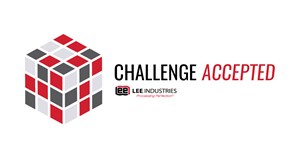Sign up to be notified of our new blog posts.
Challenge Accepted: Preventing Burn-On When Cooking Cheese Sauce in a Jacketed Kettle
Posted on July 15, 2020

Challenge Accepted is a periodic review of how we solved a unique customer challenge.
Summary: Burn-on is a common pain point when cooking cheese-based products in jacketed kettles. In this article, we explore how Lee engineers solved the issue for a customer, using a clever steam-injection approach. The result? Improved yield, easier cleanup, and a more versatile vessel capable of processing both heat-sensitive and non-heat-sensitive SKUs—all in a single system.
How to Prevent Burn-On in Cheese Sauce Production
The Challenge
Anyone who has melted cheese on a stovetop knows how tough it is to prevent it from sticking—and cleaning up afterward is no easier.
In industrial food processing, the same problem occurs when cooking cheese, cream sauces, or whey in jacketed kettles. As steam in the jacket heats the kettle, product can quickly burn onto the inner walls. Even with scraped-surface agitators, which help move high-viscosity ingredients away from the surface, a thin microfilm can still develop.
While minor burn-on may not immediately impact product quality, it can:
- Increase cleaning time
- Reduce processing efficiency
- Lower overall yield
One of our customers recently encountered this issue. They needed a system that could efficiently handle both cheese-based products and less heat-sensitive formulations. The question: Could we design a single solution to accommodate both?
The Solution: Steam Injection Instead of Jacket Heating
Our engineering team explored alternatives to standard jacket heating—specifically for the client’s cheese-based recipes—while still retaining the jacket for their other SKUs. Instead of relying on the jacket to heat the kettle walls, our engineers proposed a direct approach based on simple science:
- Inject culinary steam directly into the product
- This rapidly raises the batch temperature
- The steam condenses into water—its volume can be accounted for in the recipe
- Since the kettle walls aren’t heated, no burn-on occurs
To ensure control and consistency:
- Our fabrication specialists worked closely with engineering
- We custom-designed and integrated precision steam injection hardware
- We calibrated steam rates to achieve and maintain desired cooking temperatures
The ROE – Return on Engineering
The result exceeded expectations. The customer’s new configuration now:
- Produces a smooth, consistent cheese sauce
- Delays congealing, extending table life
- Eliminates burn-on
- Allows for quick and easy cleanup
- Improves processing throughput
- Provides flexibility—switching back to jacket heating for other SKUs
Importantly, the client avoided having to purchase multiple vessels for different product types. With just one system, they gained:
- Versatile operation across SKUs
- Higher efficiency
- Lower operational costs
Because cooking and mixing vessels are the core of the production process, they have the potential to vastly affect operational performance. Lee engineers have the experience and resources to solve complex processing problems, and we welcome a good challenge. Be sure to let us know if you’re looking for ways to improve your operation.
Frequently Asked Questions (FAQ)
Q: Why is burn-on a problem in kettle processing?
A: Burn-on affects product quality, increases cleaning time, and can reduce throughput and yield over time.
Q: What is culinary steam, and is it safe?
A: Culinary steam is filtered and treated to meet food-grade requirements. It is widely used in food processing for direct heating applications.
Q: Does steam injection alter the product's water content?
A: Slightly—but the batch formulation is adjusted to account for the water generated by condensed steam.
Q: Can this approach work with other heat-sensitive products besides cheese?
A: In some cases, yes. Steam injection can be a solution for sauces, creams, and other temperature-sensitive formulations that tend to stick or scorch.
Q: Will this solution work in existing kettles, or does it require custom fabrication?
A: While some retrofitting may be possible, we typically recommend a custom configuration to ensure proper steam control and injection design.
Last Updated: 10/29/2025
Comments
Add Your Own Comment